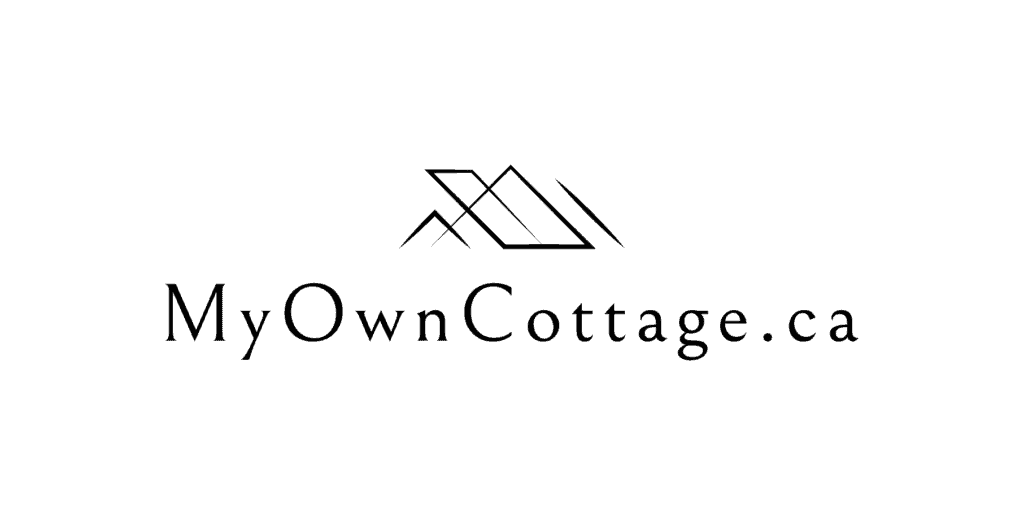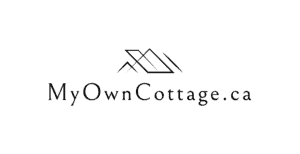Can You Put a Small Prefab Home on Any Property in Ontario?
📅 Last updated: September 18th, 2025
✍️ Written by prefab building specialists at My Own Cottage
You can’t place a small prefab or modular home on just any property in Ontario. Local zoning laws, land-use bylaws, and building permit requirements determine where prefab homes can be built.
Since each municipality sets its own rules, it’s essential to check with the local planning department before purchasing land or starting construction.
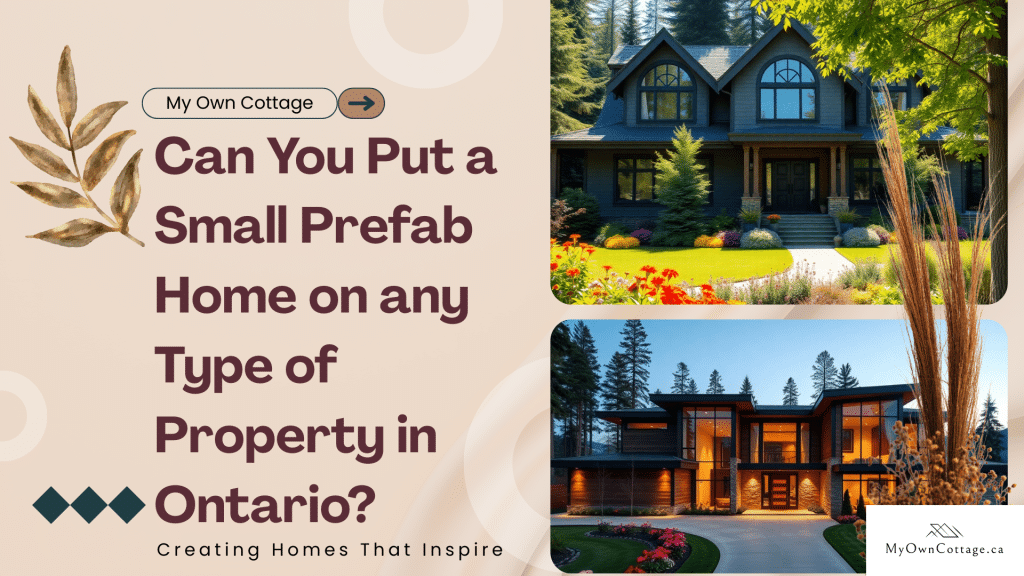
👉 Interested in what’s available? Explore our guide to small prefab homes for sale in Ontario to see current models, prices, and features on the market.
What Do You Need to Know Before Building a Prefab Home in Ontario?
If you’re planning to place a small prefab home in Ontario, your first step is to understand the legal requirements for your property.
These requirements vary by municipality but usually include:
Local zoning designations – confirming whether residential or accessory dwelling use is permitted.
Ontario Building Code (OBC) – ensuring your prefab model complies with structural, safety, and energy efficiency standards.
Municipal servicing access – verifying availability of water, septic, and hydro connections required for occupancy.
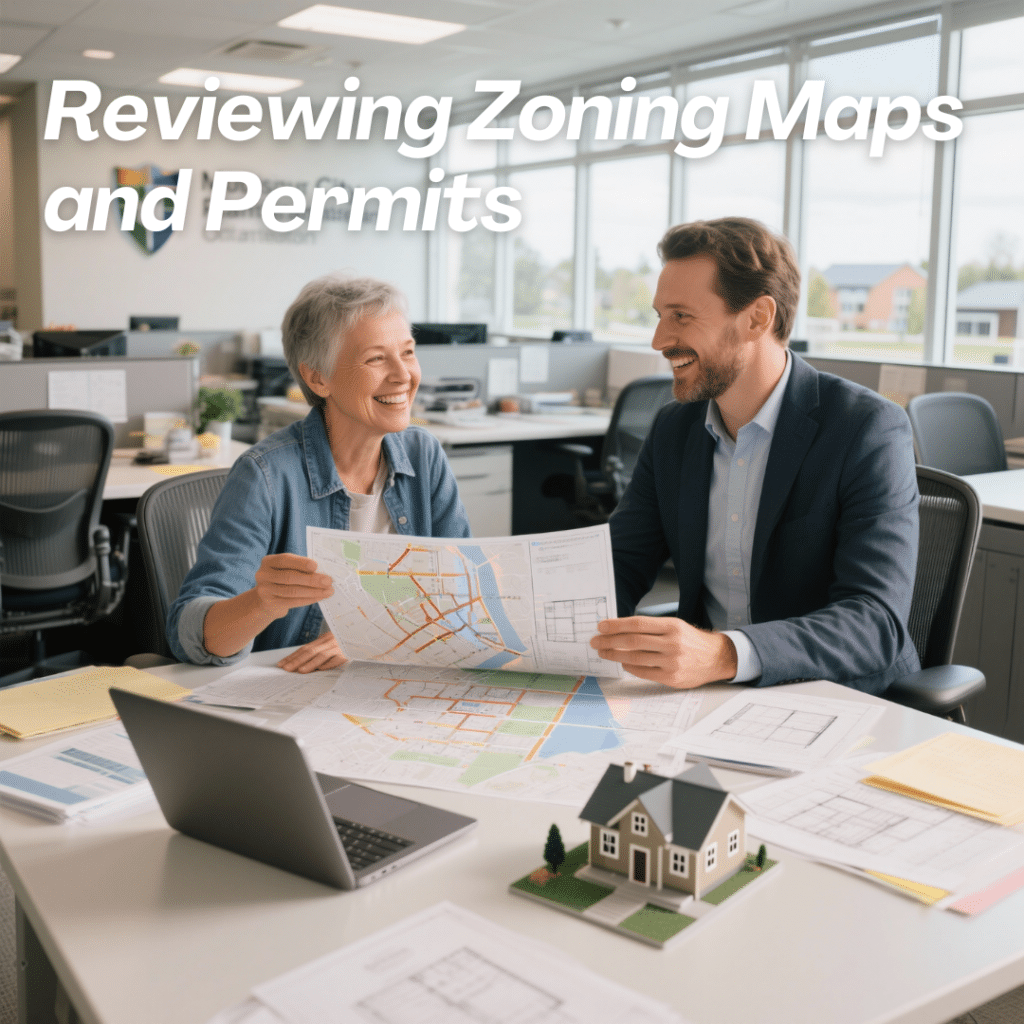
Before you purchase land, it’s also worth considering where you can buy small prefab homes in Ontario to compare availability across municipalities.
💬 “Prefab doesn’t mean exempt. Every factory-built home must comply with the same OBC standards as site-built houses, including energy efficiency.”
— Michael Chen, P.Eng., Building Code Specialist, Toronto
How Long Do Prefab Building Permits Take in Ontario?
If you’re planning to build a small prefab home in Ontario, one of the first things to research is how long the building permit process may take—and what fees you can expect.
Timelines and costs vary across municipalities. Larger cities often provide digital permitting and fast-track reviews, while smaller or rural areas may take longer, especially if your property is located in an environmentally protected zone.
📝 Disclaimer
The information below reflects average processing times and fees reported by local builders and planning offices as of 2025. Actual timelines may vary depending on lot conditions, application completeness, and seasonal demand.
🏙️ Ontario Building Permit Timeline & Cost Comparison (2025)
| Municipality | Average Approval Time | Typical Permit Cost |
|---|---|---|
| Toronto | 6–10 weeks | $1,800–$2,500 |
| Ottawa | 5–8 weeks | $1,200–$1,900 |
| Muskoka | 8–12 weeks | $800–$1,500 |
| Sudbury | 4–7 weeks | $600–$1,200 |
| Barrie | 6–9 weeks | $900–$1,700 |
For the full picture, consider not only approvals but also how long it takes to order and receive a small prefab home in Ontario.
🛠️ What Can Affect Timelines?
📄 Completeness of your application package
🏗️ Whether a variance or zoning amendment is required
🛤️ Access to services (year-round roads, utilities)
🏞️ Proximity to conservation or environmental areas
💻 Municipal systems (digital vs. paper-based)
✅ Pro Tip
“In our experience, Sudbury and Barrie tend to process prefab permits the fastest—especially when plans are CSA-certified and submitted digitally.”
— Meghan Li, Permitting & Compliance Manager, Modular Group
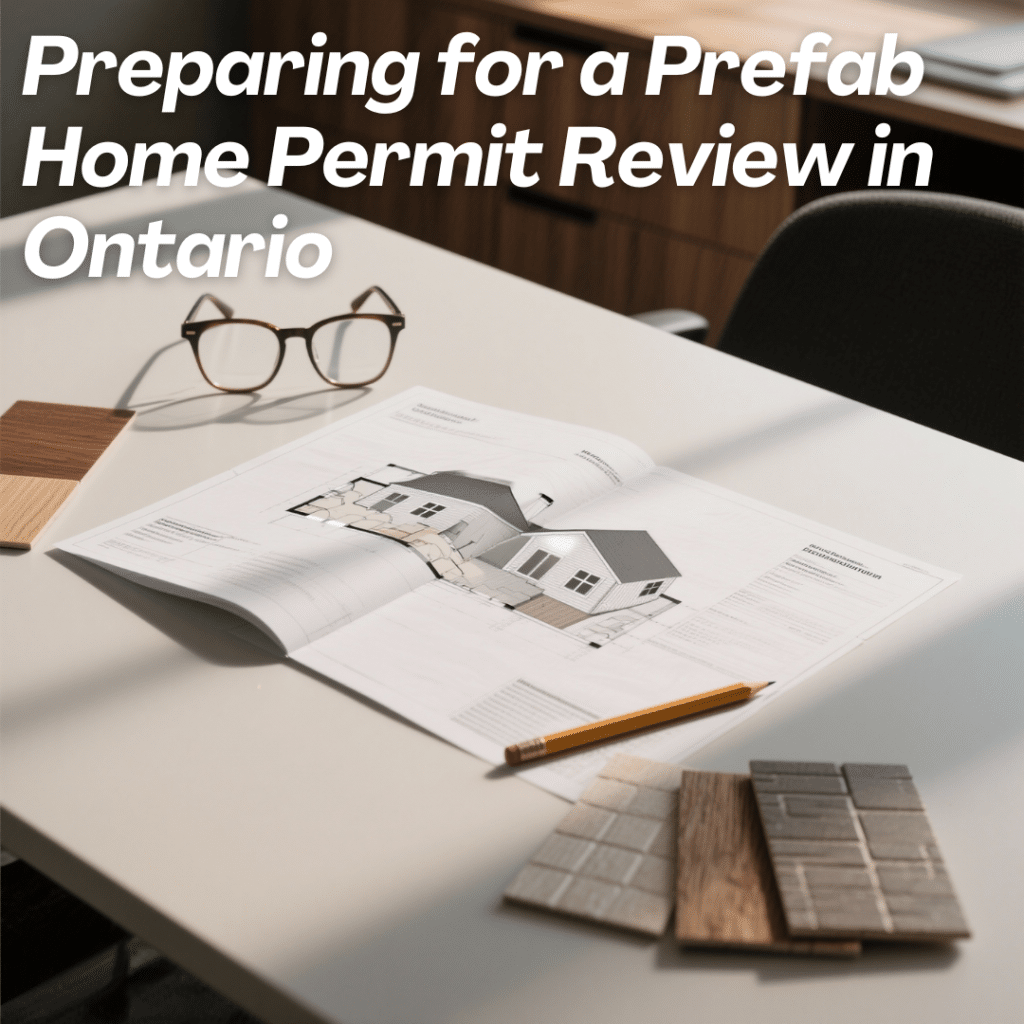
How Does the Ontario Building Code Apply to Prefab Homes?
If you’re planning to install a prefab home in Ontario, a solid understanding of the Ontario Building Code (OBC) is essential.
The OBC sets province-wide standards for construction safety, structural integrity, energy efficiency, and design requirements. Prefab and modular homes must follow the same rules as traditional builds.
📜 Prefab Homes & the Ontario Building Code
Prefab and modular homes in Ontario are governed by Ontario Regulation 332/12, which includes specific provisions for factory-built housing.
Key OBC Requirements
Part 9 – Housing & Small Buildings: Most prefab homes fall under this section, which applies to dwellings up to 3 storeys and 600 m².
CSA Certification: Factory-built units must comply with CSA A277 or CSA Z240 standards, depending on their type.
On-Site Compliance: Even if a prefab home is CSA-certified off-site, it must still meet all local building requirements when installed — including the foundation, stairs, decks, and utility hookups.
🔗 Ontario Building Code (O. Reg. 332/12)
🏭 Factory-Built Homes in Ontario: What’s Different?
| Aspect | Factory-Built (Prefab) |
|---|---|
| Code Compliance | Must meet OBC + CSA standards before leaving the factory |
| Inspection | Inspected at the factory and again on-site |
| Speed of Approval | Often faster due to controlled indoor manufacturing |
| Permit Requirements | Still requires a full municipal building permit for placement |
Since energy efficiency is a key part of OBC compliance, many people ask: are small prefab homes more energy-efficient than traditional houses?
✅ Important Reminder
Even a fully finished prefab home cannot be placed without a building permit and municipal approvals.
Always confirm your builder provides:
📑 CSA certification documents
🏗️ Detailed architectural drawings
Both are typically required when submitting a permit application.
👉 Working with a licensed builder who understands Ontario’s zoning bylaws, OBC standards, and permit requirements ensures your prefab project is approved smoothly and avoids costly delays.
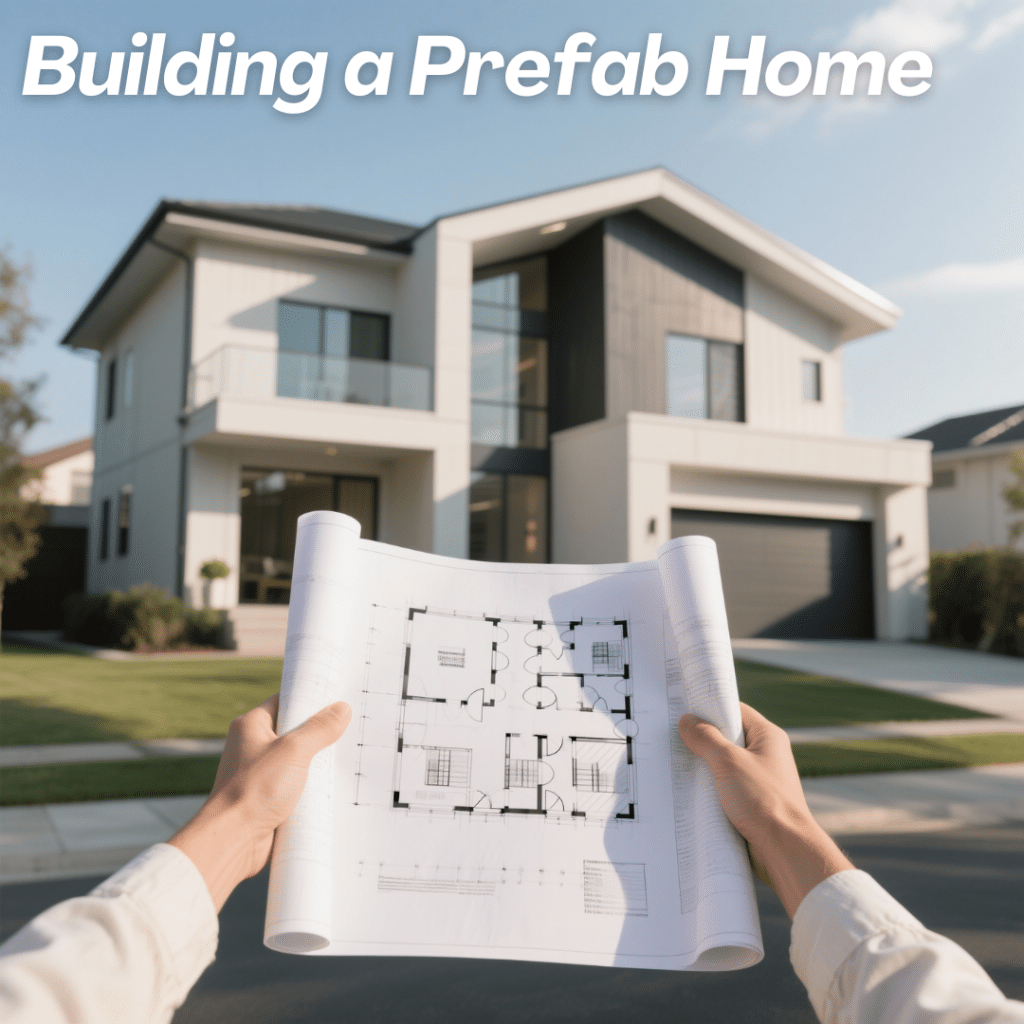
What Zoning Laws Affect Prefab Homes in Ontario?
What Is Zoning and Why Does It Matter?
Zoning determines how land in Ontario can be used—whether for residential, agricultural, commercial, or mixed-use purposes. Each municipality enforces its own zoning bylaws, which dictate what types of structures can be built or installed on a property.
For factory-built and prefab homeowners, this means you can’t simply buy land and place a home on it. You must first confirm that your property’s zoning designation allows prefab housing.
Key Zoning Restrictions for Prefab Homes in Ontario
Common restrictions that may affect prefab home placement include:
Lot size minimums – Some municipalities require at least 0.5 acres for residential builds.
Setback rules – Minimum required distance between your home and property boundaries.
Servicing requirements – Proof of access to water, septic, and utilities.
🔍 Important: Zoning bylaws vary by municipality. A property that allows prefab homes in one town may restrict them in another.
Zoning Examples in Ontario
Ottawa: Prefab homes are permitted in most residential zones, but secondary dwellings on agricultural land require permits.
Smaller municipalities: Prefab cottages may be allowed on seasonal properties, but restrictions often apply near lakes, rivers, or conservation areas.
🔑 Takeaway
Before purchasing land or starting a prefab project in Ontario, always:
Review your municipality’s zoning map and bylaws.
Confirm lot size, servicing, and setback requirements.
Speak with the local planning department to avoid costly delays.
Beyond zoning, buyers often ask about financing options for small prefab homes in Ontario and whether they qualify for residential mortgages.
Types of Properties and Suitability for Prefab Homes
🏘️ 1. Residential Lots
Most prefab homes in Ontario are placed on residentially zoned lots, but you must confirm that:
The lot meets minimum size requirements set by your municipality.
The property has access to municipal or private servicing (water, septic, hydro).
The home complies with the Ontario Building Code (OBC).
🚜 2. Agricultural Land
Prefab homes can sometimes be placed on farmland, often for:
Seasonal farm workers
Multi-generational family housing
However, approvals are typically stricter. You’ll likely need:
A zoning amendment from your municipality
Proof that the dwelling is for farm-related purposes (not general residential use)
🏕️ 3. Cottage & Recreational Land
Prefab cottages and cabins are common in Ontario, but conditions may apply. If you’re considering vacant land, see our full guide: Can I Build a Prefab Cottage on My Vacant Land in Ontario?
Here’s the key information:
❄️ Seasonal restrictions may limit winter use.
🧼 Conservation authority approval may be required near lakes, rivers, or wetlands.
🚧 Year-round living is generally allowed only if servicing (water, septic, utilities) is available.
🏬 4. Commercial or Mixed-Use Land
While less common for residential purposes, prefab units on commercial or mixed-use properties may be approved for:
Office space
Rental units
Keep in mind:
Full zoning compliance is required.
A building permit is still necessary before installation.
If you’re weighing options, it’s helpful to know whether models are sold move-in ready or as prefab kits in Ontario.
📊 Prefab Home Placement Rules in Ontario
| Property Type | Prefab Home Suitability |
|---|---|
| Residential Lots | ✔ Most common placement option. Must meet lot size minimums, service connections (water, septic, hydro), and Ontario Building Code compliance. |
| Agricultural Land | ⚠ Sometimes allowed (e.g., farm worker housing or family). Requires zoning amendment or proof of farm-related use. |
| Cottage / Recreational Land | ⚠ Allowed, but seasonal restrictions often apply. Conservation authority approvals may be required near lakes, rivers, or wetlands. |
| Commercial / Mixed-Use Land | ⚠ Rare. Possible for offices or rentals, but full zoning compliance + building permit still required. |
What Permits and Approvals Are Required for Small Prefab Homes in Ontario?
Building Permits and Local Approvals
Every prefab home in Ontario requires a building permit before installation. To contrast, the process for Ontario’s small prefab home permits usually involves:
📑 Submitting architectural plans and supporting documents
🏗️ Demonstrating compliance with the Ontario Building Code (OBC)
💵 Paying permit fees (typically $500–$2,000, depending on municipality)
⏳ Waiting for approval (4–8 weeks on average)
If you’re wondering about the paperwork, see our guide on what permits are required to build a small prefab home in Ontario.
Septic, Water, and Utility Considerations
If your property doesn’t have municipal servicing, you’ll need to arrange:
✅ Septic system approval from your local health unit
⚡ Hydro and utility hookups to connect your home
🛣️ Proof of year-round road access if the prefab will serve as a permanent residence
Some buyers also look into eco-friendly small prefab home options from Ontario companies, since these often integrate well with modern utility requirements.
Working With Your Municipality
Successful prefab homeowners often emphasize the value of engaging with the planning department early in the process. Doing so helps clarify local rules, avoid delays, and streamline approvals.
💬 Real Insight:
“I assumed I could just drop a prefab cottage on my land, but the municipality required a setback from the lake and septic approval first. Talking to them upfront saved me months of delays.”
— Mark D., Muskoka homeowner, Ontario
Expert Insight: What Ontario Municipal Planners Want You to Know
Placing a prefab home in Ontario isn’t just about following zoning bylaws on paper — it also means navigating real-world planning departments, local interpretations, and hidden rules that only experienced professionals know.
Here’s what municipal insiders and industry experts want you to understand before breaking ground.
🧑💼 From a Municipal Planner — Kawartha Lakes
“Always check if the lot falls under a conservation authority overlay—many forget that, and it leads to permit denials.”
— Claire Thompson, Urban Planner
Many properties in Ontario fall within environmental protection zones that override standard municipal zoning. If your land is near a lake, wetland, or forest, you may face extra restrictions from a conservation authority, even if the property is zoned residential.
🏗️ From a Prefab Home Builder — Simcoe County
“People assume prefab means faster, but delays happen when customers haven’t done their homework with the city first. We always recommend starting with a zoning pre-consultation.”
— Daniel Reeve, Lead Prefab Designer
Most municipalities offer free or low-cost pre-application consultations. These sessions can:
Reveal hidden zoning or permitting red flags
Clarify servicing requirements (water, septic, utilities)
Save weeks — or even months — of costly delays
⚖️ From a Land Use Lawyer — Toronto
“Many rural and cottage properties are subject to ‘non-conforming use’ or outdated zoning bylaws. These require variances or full rezoning applications—both can be expensive and time-consuming.”
— Erin Patel, LL.B., Zoning Consultant, Ontario
Legal advice is especially valuable when:
Land has multiple uses (e.g., residential + agricultural)
You’re converting a seasonal dwelling into a permanent residence
You’re installing a prefab home on leased or shared land
🛠️ What This Means for You
These expert insights highlight one key point:
✅ Technical compliance is not the same as municipal approval.
To move forward with confidence:
Contact your municipality’s planning office before buying or building
Ask about zoning overlays, conservation authority rules, variances, and servicing requirements
Get legal and builder input early to avoid costly surprises
What Are the Biggest Myths About Small Prefab Homes in Ontario?
It’s no surprise that small prefab homes are becoming increasingly popular in Ontario for affordability and efficiency.
Below, we’ll dispel some of the myths and reveal the reality of these innovative homes.
| Myth | Reality |
|---|---|
| “Prefab homes can go anywhere.” | ❌ False — zoning laws apply. |
| “No permits needed.” | ❌ Wrong — permits are always required. |
| “Only for cottages.” | ❌ Outdated — prefab homes are used in cities, farms, and more. |
For verified information, visit Ontario.ca’s Building Code resources or check with your local municipality.
How Can You Tell If Your Ontario Property Allows a Prefab Home?
Before you build a prefab home in Ontario, always:
🗺️ Contact your local planning department – Confirm zoning designations, overlays, and permit requirements.
📘 Review the Ontario Building Code (OBC) – Ensure your home design meets all structural, safety, and energy efficiency standards.
💸 Budget for servicing and municipal fees – Factor in costs for septic, utilities, road access, and permit charges.
📅 Book a Free Consultation today and start planning with confidence.
🎯 Want Help Placing a Prefab on Your Property?
At My Own Cottage, we’ll help you:
✅ Review zoning and lot suitability — avoid costly surprises before you build
🏗️ Navigate permits and approvals — with clear, step-by-step guidance
🏡 Explore customization options for small prefab homes in Ontario — tailored to your lifestyle and budget
👉 Want to see compliant prefab models that are available now? Explore our guide to Small Prefab Homes Ontario for Sale for current listings and builder recommendations.
How to Check If Your Ontario Property Allows a Small Prefab Home
So, can you put a small prefab home on any type of property in Ontario? Not exactly.
Not exactly.
Placement depends on zoning, servicing, and local bylaws. In Ontario, prefab homes are typically allowed on:
🏘️ Residential lots (most common)
🚜 Agricultural land (with restrictions)
🏕️ Cottage or recreational properties (seasonal limitations often apply)
But each option comes with its own rules — meaning approvals are rarely automatic.
✅ Before You Buy Land or Order a Prefab, Always:
🗺️ Confirm zoning with your local planning department
📘 Review Ontario building permit requirements for prefab homes
💸 Budget for servicing, site preparation, and municipal fees
🚀 Ready to Build Your Prefab Home?
Get started today — book a free consultation, call us directly, or explore our design catalogue to find the perfect fit for your property.
🧑💼 Request a Free Consultation
📲 Call Us Directly: (705) 345-9337
🏘️ View Our Design Catalogue
✅ Ontario-Built | ⚡ Energy-Efficient | 🏡 Fully Customizable | 🚚 Fast Delivery
Alternatively, for your convenience, you can also simply fill out the contact form below and we’ll get back to you soon! 👇
Placing a Small Prefab Home on Any Property in Ontario (FAQ)
Can You Put a Small Prefab Home on Any Type of Property in Ontario?
No. You cannot place a small prefab home on just any property in Ontario. Placement depends on zoning bylaws, the Ontario Building Code, lot size rules, setbacks, and servicing requirements. Always check with your local municipality’s planning and building department before buying or building.
Do You Need a Permit for a Prefab Home in Ontario?
Yes. All prefab homes require a building permit issued by your municipality. You must submit plans that comply with the Ontario Building Code and CSA standards, pay applicable fees, and secure approvals for septic or utility connections if needed.
Can You Put a Prefab Home on Agricultural Land in Ontario?
Sometimes. Prefab homes may be allowed as secondary dwellings on farmland, but municipalities set strict rules. Farmers may use them for family or workers, but approvals depend on zoning bylaws and whether the home supports agricultural use.
Are Prefab Homes Allowed on Cottage or Recreational Properties in Ontario?
Yes, but restrictions apply. On seasonal or waterfront properties, municipalities may limit year-round occupancy and require additional approvals from conservation authorities. Septic, water, and road access are often key factors.
Can You Put a Prefab Home on Commercial Land in Ontario?
Rarely. Prefab homes are not usually permitted as primary residences on commercially zoned land. However, they may be approved for office or mixed-use purposes if the zoning allows. Always confirm with local bylaws.
Do You Need to Own the Land Before Placing a Prefab Home in Ontario?
In most cases, yes. You’ll need proof of land ownership to apply for building permits. If the land is leased, the landowner must apply for and secure all zoning approvals and permits.
Are Tiny Homes and Prefab Homes Treated the Same in Ontario?
No. Tiny homes often fall under “secondary dwelling unit” bylaws, while prefab homes are treated as permanent primary residences. Both must comply with the Ontario Building Code but may face different zoning restrictions.
How Much Does Zoning Approval Cost for a Prefab Home in Ontario?
Zoning approval and permit fees vary by municipality. Expect $500–$1,500+ depending on the property type, permit type, and complexity of your application.
Will Any Prefab Builders Help with Determining If I Can Place a Small Prefab Home on My Property?
Yes. Some prefab home companies provide guidance on property suitability. For example, My Own Cottage works directly with Ontario homeowners to review zoning bylaws, lot requirements, and building permits. They can help you determine whether your land qualifies before you commit to buying or building a prefab home.
🛡️ Verified Third-Party Resources
For added confidence and transparency, here are trusted external sources that support modular homebuilding in Ontario:
Ontario Building Code (O. Reg. 332/12)
Official provincial regulations that govern modular and factory-built homes.Tarion Warranty Corporation
Provides home warranty coverage and builder licensing in Ontario.Canadian Home Builders’ Association (CHBA)
National organization supporting residential construction, modular certification, and best practices.CMHC – Canada Mortgage and Housing Corporation
Federal housing authority offering insights on modular housing affordability, financing, and energy efficiency.Statistics Canada: Housing Data
Data-driven research on Canadian housing trends, ownership, affordability, and construction.
